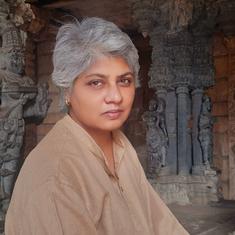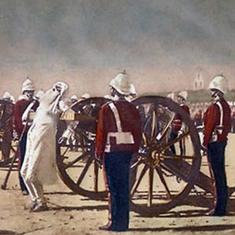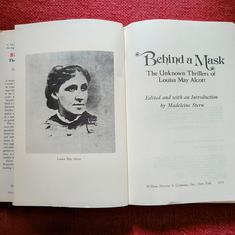When the British began making inroads into Southeast Asia at the start of the 19th century by setting up trading posts that would eventually become colonies, one enterprising community from Tamil Nadu sensed an opportunity. The region was going to witness a surge in economic activity and the community could make a fortune by financing it. Its instinct paid off. Over the years, the Nattukottai Chettiar community – whose men stood out in the Malacca Straits with their dhotis, shaved heads and vibhuti on foreheads – became the major financier of trade in the region.
“The age-old tradition and folklore of the Chettiar community suggested the existence, from very early times of commercial connections between the Chettiars and Malaya,” Raman Mahadevan wrote in a study published in the Economic and Political Weekly in 1978. “However, such trade connections, sporadic and temporary as they were, need to be clearly distinguished from the modern phenomenon of organised penetration of Chettiar capital from the early 19th century onwards into regions in the Malay Peninsula which had come under colonial rule, namely Malacca, Penang and Singapore.”
The Nattukottai Chettiars set up shop in Malacca (now Melaka) in 1808, and had a major presence in Singapore by the 1820s and Penang by the 1840s. They lent money to a wide range of people, from small farmers to big trading ventures and mining operators, using contracts that could be enforced under the legal and administrative systems that were being put in place by the British.
“The relaxation, if not the abandonment, by the British of several restrictive mercantilist arrangements of the Dutch, the substitution of the monopolistic trade policy of the Dutch with a policy of free trade, the creation of a modern fiscal system in place of semi-feudal devices of raising revenues, and lastly, the establishment of a unified political and administrative system, were some of the measures that created this favourable or congenial climate for trade and commerce, and thus attracted a large number of traders, merchants and businessmen of Asian origin to this region,” Mahadevan wrote. The Chettiars were joined in the region by traders from different parts of India and China.
Financial intermediaries
Before Western banks came to the colony called the Straits Settlements (comprising of Penang, Singapore and Malacca), the Chettiars were the most important financiers in the region. They provided both long- and short-term loans to small and medium Indian and Chinese traders. Loans were provided against movable and immovable properties as well as promissory notes.
When British and European banks did establish themselves in the Straits in the middle of the 19th century, they only lent to large European and Chinese merchant houses, leaving enough room for the Chettiars to operate. Another role the Chettiars filled was as intermediaries between small and medium traders and banks.
“Their knowledge of the credit-worthiness of the small and medium Chinese and Indian traders, coupled with their financial standing and reputation as businessmen of shrewdness and competence enabled the bigger Chettiar firms to secure financial accommodation with the European banks in the form of fixed loans and overdrafts on current accounts against the security of bills or title deeds to property, besides the discounting of bills,” Mahadevan wrote.
It is believed the community also benefited from the opium trade. In his 1954 book titled Realms of Silver: One Hundred Years of Banking in the East, British writer Compton Mackenzie wrote that “most of the Singapore opium trade passed through their hands.” He added that the Chettiars were the main agents for the exchange of bank notes between Chinese traders and the Chartered Bank of India, Australia and China. “It was a very rare occurrence for a Chettiar not to meet his obligations, and so rapidly did the Bank’s connection with the Chettiars and Chinese grow that by 1872 almost all the local bills discounted were acceptances drawn at two or three months’ date by these groups on Chinese purchasers of opium,” Mackenzie wrote. Members of the Chettiar diaspora in Singapore who were contacted by this writer disputed Mackenzie’s claims about the community’s role in the opium trade.
The Chettiar community’s moneylending and intermediary businesses grew for decades after the entry of Western banks in the Straits. “Their success rested on their willingness to make loans to customers, who lacked the financial standing to borrow from banks, on astute investments, and on interlocking financial agreements among Chettiar firms,” academic Paul Kratoska wrote in the June 2013 edition of the Journal of the Malaysian Branch of the Royal Asiatic Society.
By 1883, Singapore had just four mercantile exchange banks but 28 Chettiar firms, according to the archives of the Singapore Government Gazette. Several Straits Chinese businesses thrived because of the financial services provided by the Chettiars. Among them was Loke Yew, a Chinese-born magnate who played a key role in the development of Kuala Lumpur.
Work from home
It was a practice in the community to set up kittangis, which means warehouses in Tamil. A forerunner to the work-from-home model imposed by the pandemic, the kittangi would be used as an office at day and home at night, where members of the community slept on mattresses on the floor. According to Roots, a website run by Singapore’s National Heritage Board, at one time, the city’s Market Street had seven kittangis that housed 300 to 400 Chettiar firms. Similar clusters of Chettiar moneylending businesses existed in Penang and Malacca.
Once the community became established in the Straits, the Chettiars started to bring their families over and set up an active cultural life. In Penang, the community built the Arulmigu Balathandayuthapani Kovil (better known as the Waterfall Hill Temple) in 1854. It has been renovated and expanded several times and is now one of the focal points of the Thaipusam festival in Malaysia. The Chettiars also built the Sri Thendayuthapani Temple in Singapore in 1859. A more modern structure replaced the temple in the 1980s and is popularly known as the Chettiars’ Temple.
“Temples that Chettiars established in India and in Southeast Asia were central to their success,” Kratoska wrote. “Devoted to Murugan, son of Lord Siva, these temples were important community centres where Chettiars exchanged information and periodically met to set interest rates for loans within the Chettiar community.”
Thaipusam was used as a networking occasion, as people from many parts of the Malay peninsula and Singapore would go for celebrations hosted in cities that were Chettiyar strongholds. “Chettiars donated a percentage of their profits to temples, which in turn deposited the funds with Chettiar firms in proportion to their size and capacity,” Kratoska wrote, adding that this was seen as a way of involving Lord Murugan in their business and ensuring that dealings were honest in order to not risk the wrath of their deity.
Business downturn
The community managed to stay relevant in the financial services industry in the region until the 1920s. “The Chettiar moneylending firms in Malaya, which had on the whole been conducting good business through their indirect association with the rubber and tin industries, suffered a setback with the onset of the depression in 1929,” Mahadevan wrote. “The effect of the depression on the colonial Malayan economy was quite severe; particularly hard hit were two principal industries viz rubber and tin, which were dependant on the world market for their prosperity.”
When global prices for these commodities crashed, the owners of estates could not repay loans to the Chettiars, who seized their land and assets. But in a depressed economy, these assets lost value and the community did not have adequate flow of capital. Government restrictions on sale of land made it difficult for the community to sell their seized assets, pushing many of them into penury.
The Second World War and the Japanese invasion of British colonies in Southeast Asia followed the Great Depression, and the Chettiar community lost its stranglehold on the finance industry in Malaya. Even before the British left Malaya in 1957, modern banking was starting to become accessible to small and medium businesses in the region. By the early 1970s, about 40 Chettiar moneylending businesses were operating in Singapore from the kittangis on Market Street. In 1977, the area that had been home for the Chettiars from the 1820s was redeveloped.
The Nattukottai Chettiar community remains economically active in Singapore and Malaysia, where its members consider themselves a “micro minority”. History written in these countries generally respects the contribution of the community towards the development of economic activities in the region.
Ajay Kamalakaran is a writer and independent journalist, based in Mumbai. He is a Kalpalata Fellow for History & Heritage Writings for 2022.










